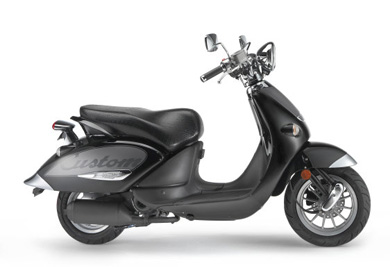Introduction
Aprilia - Mojito 50 Custom (1999–2001, ZD4PKU1)
The Aprilia Mojito 50 Custom (model years 1999 to 2001, ZD4PKU1) belongs to the first generation of Mojito/Habana scooters and shares its technical specifications with its sibling models. It combines retro design with reliable mechanics and practical rideability.
Thanks to its low seat height, stable stance, and classic look, it’s a popular choice among city riders and fans of nostalgic 50 cc scooters.
Model History
Type ZD4PKU1 was produced alongside models such as ZD4PK00, ZD4PKA1, etc. Differences primarily relate to country-specific type approval and equipment.
With the Mojito series, Aprilia departed from its sportier scooters of the era and focused on style, comfort, and a nostalgic aesthetic.
After 2001, updated successors were introduced, but original versions like the ZD4PKU1 remain appreciated by insiders.
Technical Details
The air-cooled single-cylinder two-stroke engine with 49 cc delivers around 2.8 to 3.2 kW, depending on restrictions.
Power is transmitted via a stepless CVT automatic with centrifugal clutch and maintenance-friendly V-belt.
Both electric and kick starters come as standard – ideal for daily use.
The engine is known for its reliability, ease of maintenance, and urban-friendly fuel economy.
Chassis and Brakes
The chassis combines a steel tube frame with telescopic front forks and a mono shock rear – tuned for urban comfort.
Braking system: 190 mm front disc brake and rear drum brake – a proven combo for this class.
With a dry weight of approx. 89 kg and compact dimensions, the scooter is agile and easy to handle.
Standard wheel size: 10-inch front and rear.
Equipment and Design
Signature features include a flat step-through, low seat position, and relaxed ergonomics – ideal for shorter riders.
Design elements: round chrome-ringed headlight, classic mirrors, chrome trims, and an analog speedometer.
A helmet compartment under the seat and optional rear rack add practicality.
Color Variants
The ZD4PKU1 was offered in black, ivory, dark blue, and red depending on the market – sometimes with metallic finishes.
Whitewall tires and two-tone seats were common stylistic choices.
No official limited editions are documented, but many units were customized individually.
